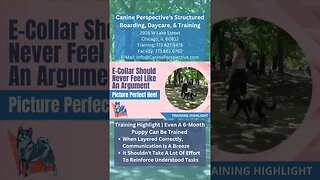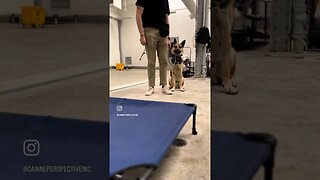Secret Hack to Dog Recall Training #shorts
One of the proudest moments I’ve had with my dog was getting her to stop mid run and come back to me while she was chasing a rabbit. I was absolutely dumbfounded. My dog just stopped mid run and came back to me? Oh yes — it is possible.
We achieved it by consistently working on her recall over many months. My trick was to make sure I was always more interesting than her surroundings, so I became a constant supply of treats, games, and praise.
It wasn’t easy, and there were frustrations but seeing your dog stop mid run and come right back to you enthusiastically made it all worth it. This post goes over some of the simple ways you can help improve your dog’s recall.
How to Improve Your Dogs Recall
Let me guess, your dog doesn’t always come when called? Or does your dog out the door as soon as it’s opened & run away? Does your dog take off and chase anything that moves? Trust me you’re not alone. It’s happened to all of us, and it can be really tough during a dogs rebellious adolescent stage.
If you want to train your dog to reliably come when called this post is for you. These 13 simple tips will help improve your dogs recall.
I Used to be “That” Person
We’ve all seen that person at the park yelling and screaming at their dog to come back, but have you ever thought about what that experience is like through their dog’s eyes? If I were that dog I’d much rather sniff that tree or roll in something smelly than come back to my angry, yelling owner. Frustration and yelling seems to come so naturally to us when our dog doesn’t listen. It doesn’t, however, do anything to entice our dogs to come back to us.
Eventually I figured out that my methods weren’t working. I started doing research on positive training methods and reward based training. I had to train myself to try new methods that were unfamiliar and learn more about dog behavior and motivation.
Why Recall Is So Challenging to Train
Your dog’s recall is arguably the most important command you can teach, but it can also be one of the hardest commands to get reliably. We set ourselves up for failure. By trying to be more interesting to our dog than that squirrel, and then punishing them when we do manage to get them back. If you were your dog what would you do next time? I’d chase the squirrel.
Chasing that squirrel is highly rewarding to your dog, especially if they’ve got a high prey drive. When you’re chasing after your dog yelling “come here” in a negative tone with extra expletives it’s no wonder they’re going to continue to chase rather than come back to you – the angry, yelling owner.
They’ll continue to chase and disobey if their distraction is more rewarding than what you have to offer. It’s always going to be funner to chase that squirrel rather then be put back on a leash and taken inside.
In order to get our dogs to come when called we need to make ourselves someone that’s consistently enjoyable to our dogs; someone that’s always worth running back to.
Overcoming the Extra Excitement
For many dogs going outside is their big “yippeeee” moment of the day; it’s their time to run around, play, and have fun. It’s pretty hard to compete with that, especially if they have pent up energy. Playing with your dog throughout the day helps them burn off some of that mental and physical energy and makes it easier for them to focus later on.
Avoid that instant excitement of going outdoors by playing with your dog beforehand. The more you actively play with your dog and engage them the more attentive they’ll be when it comes to training. It’s all part of establishing a strong bond with your dog.
The trick to training recall with your dog and making it reliable is to show them that they’re always making a positive choice when they come — and that takes a lot of practice.
Start in a low distraction environment such as your living room or garden. Don’t start your recall training where there’s a lot of distractions; you’d just be setting yourself up for failure.
When Training Recall Use Consistency & Be Patient
Consistency and patience are key when it comes to training a dog. When you begin teaching your dog to “come here” the rewards must be given readily and excitedly. Clearly communicate to your dog that coming to you was the best choice they’ve ever made.
Don’t rush out and try to train a new behavior in a 3 hour long session. Dog’s don’t have the longest attention spans so keep the training sessions short and sweet. If your dog starts to show signs of growing bored pack it in for the day and start again tomorrow.
You Might Not Get 100% Reliability – But You Can Get Close
It’s very difficult to achieve 100% reliability when it comes to your dogs recall. Not all dogs are as naturally willing to please, and some can are much more motivated to roam than others. Recall can be hard for certain dogs to master – it goes against their natural instinct to sniff, explore, or chase. Even the best trained dogs will find certain distractions more rewarding than their owners from time to time.
The more your practice using positive reinforcement and consistency, the more reliable your dogs recall will be. You know your dog best – when they make the right choice and come back to you make it worth their while with a high value treat or game. If your dog keeps receiving great benefits from obeying the “come here” command they’re much more likely to make that same rewarding choice in the future.
Knowing When to Leash Your Dog
Once you have a reliable recall you might be tempted to go leash free at all times. It can be quite exciting and liberating, and some of the best times are had off leash, but sometimes it’s not worth the risk.
No matter how well you think your dog is trained there are certain situations where your dog may take off. Some dogs will find chasing a rabbit irresistible, while some may take off after getting spooked by a motorcycle. If your dog always comes when called that’s great – but it doesn’t mean you should walk him down the road without a leash.
With enough practice you’ll be able to gauge your dogs personal distraction threshold and know when it’s better to keep them on lead rather than setting up an instance where they won’t listen or might run into an unsafe situation. If your unsure about your dogs reliability it’s always better to to keep them leashed to avoid potential dangers.
-
 3:33
3:33
ExpertDogTraining
1 year ago#1 Best Secret to Training Your Dog
-
 0:14
0:14
Dog Training Blessings
1 year agoits sexy time #shorts #dogtraining
10 -
 0:51
0:51
American Standard K9
1 year ago#1 Dog Training Secret Trainers Don’t Want You to Know
3 -
 0:15
0:15
PetCareSupp
3 years ago $0.01 earnedDog Training Secret Never Told...
148 -
 0:58
0:58
CaninePerspective
11 months agoDog Training: If A 6M Old Puppy Can Understand It Any Dog Can #dogs #dogtraining #dogshorts #shorts
2 -
 16:31
16:31
Fun diy-projects
1 year agoSECRET ROOM FOR MY DOG! Gadgets And Hacks For Pet Owners
3 -
 0:55
0:55
UPLOOSER TRENDS
6 months agoDOGS TRAININGS SECRETS
4 -
 0:17
0:17
CaninePerspective
1 year agoDog Training: New 2-Week B&T Duke Crushing The Place Command #dogs #shorts #dogshorts
3.03K -
 1:17
1:17
RAW DOG FOOD AND COMPANY
6 months agoBest for Training Treats and Chews shorts
12 -
 0:21
0:21
CaninePerspective
11 months agoDog Training: A Previous Client Comments On Quality Of Training We Provide #dogs #shorts #dogshorts
41